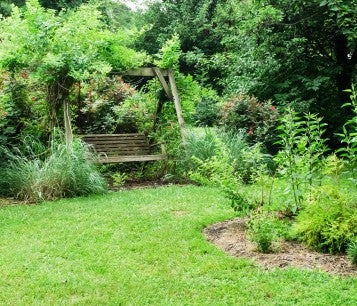They inhabit the ruins of a 14th-century empire in Africa, cling to 800-year-ol cliffside dwellings in Arizona, forage in old Indian temples and European churches and occupy the decidedly less grand crawl spaces of our modern homes.
As the world’s only true flying mammals, bats know how to get around. While some of the 1,300 bat species have esoteric lifestyles—roosting in unfurled banana leaves or tents carved from rainforest foliage—many build a life wherever people have already made their mark on the land. Adapting to the latest artifacts of human civilization, bats often trade their traditional caves for abandoned mines and trees for cozy attics.
Though resilient, these animals—who account for a quarter of all mammal species—are in decline worldwide. The pace of development is much faster than it was in the days of ancient temple-building, with chainsaws destroying natural roosting sites, pesticides decimating food supplies and wind turbines killing bats outright. Humans have even learned how to take to the skies themselves, paving the way for the speedy transport of pathogens like the one that has killed nearly 7 million bats in North America in the past 10 years.
The fungus responsible for white nose syndrome likely arrived on the clothing or gear of cavers, scientists or other visitors to hibernation sites. Not known to affect bats where it originates in Europe, here the pathogen causes bats to awaken too early from winter slumber, depleting their limited fuel reserves. Transmission is so rapid that little brown bats could be gone from the eastern U.S. by 2020.
“In just a couple of decades, we’re looking at going from an extremely common species to an endangered or nearly extinct species,” says Rob Mies, executive director of the Organization for Bat Conservation. White nose syndrome will likely affect more than half of the 47 bat species in the U.S. and Canada. “It’s just absolutely devastating.”
Their vanishing would be ecologically disastrous. Most bats are insectivorous, consuming up to 120 % of their weight daily and contributing an incalculable amount of insect control services. Some are pollinators and seed dispersers, playing an important role in forest regeneration… and even in happy hours.
The margaritas, chips and guacamole at your favorite Mexican restaurant are made possible by bats. “Bats pollinate avocado trees, and they also protect corn—they’re one of the most important predators of the corn earworm moth,” says Mies. “And they’re the only pollinators of the agave that we make tequila from.”
In just a couple of decades, we’re looking at going from an extremely common species to an endangered or nearly extinct species ... It’s just absolutely devastating.
Rob Mies, Organization for Bat Conservation
While certain locations—like the Congress Avenue Bridge in Austin, Texas—are known for bats, they’re everywhere; we just don’t realize it. “When people are outside and bats are flying over their head, they don’t know they’re bats,” says John Griffin, director of the HSUS urban wildlife solutions program. “They think they’re birds.”
More closely related to whales than birds, bats can see but primarily rely on echolocation, emitting high-frequency sounds to find prey. Their wingspans belie their size; even a big brown bat is not so big at all, weighing less than an ounce, notes Deborah Millman, director of the Cape Wildlife Center, operated by the Fund for Animals in partnership with the HSUS. Bats are so diminutive that rehabilitators feed them with tweezers and wear special gloves to protect both the handlers and the bats’ paper-thin wings.
In a newly retrofitted barn attic situated near night lights to attract insects, recovering bats at the Cape Wildlife Center also feed themselves. Before the habitat was built, “we had one bat who was literally walking to the food dish,” says Millman, but now flying patients can build cardio strength critical to life in the wild. “We’re really bat-happy here. People are afraid of them, but they do a lot of good.”
A humane backyard is a natural habitat offering wildlife plenty of food, water and cover, plus a safe place to live free from pesticides, chemicals, free-roaming pets, inhumane practices and other threats. And it's so easy to build!

You can create safe spaces for these delicate creatures on your own property too.
Plant a bat garden
In the daytime, bats are masters of disguise: Red bats hanging from trees look like decaying leaves, and hoary bats’ coats mimic lichen. Help them evade predators by leaving dead trees in place and planting hickories, maples, oaks, spruces and pines.
At night, bats eat insects attracted to nocturnal bloomers such as evening primrose. In many regions, fall is a great time to plant; find recommended plants and obtain a bat habitat sign from the Organization for Bat Conservation.
Install a bat hotel
They may not be used immediately, but well-designed bat houses are refuges when trees or other roosting sites are destroyed. “Bats aren’t going to leave a perfect place,” says Mies, “but when they need to relocate, that’s when the bat house is available.”
Evict humanely
Tiny crevices leading to attics are invitations to bats. “They can virtually flatten themselves and get into really tight spaces,” says Griffin. To remove them safely, he covers gaps with a temporary fiberglass window screen open at the bottom. Called a “check valve,” the method allows bats to exit but not reenter.
Want more content like this?
This was written and produced by the team behind All Animals, our award-winning magazine. Each issue is packed with inspiring stories about how we are changing the world for animals together.
Learn MoreSubscribe
